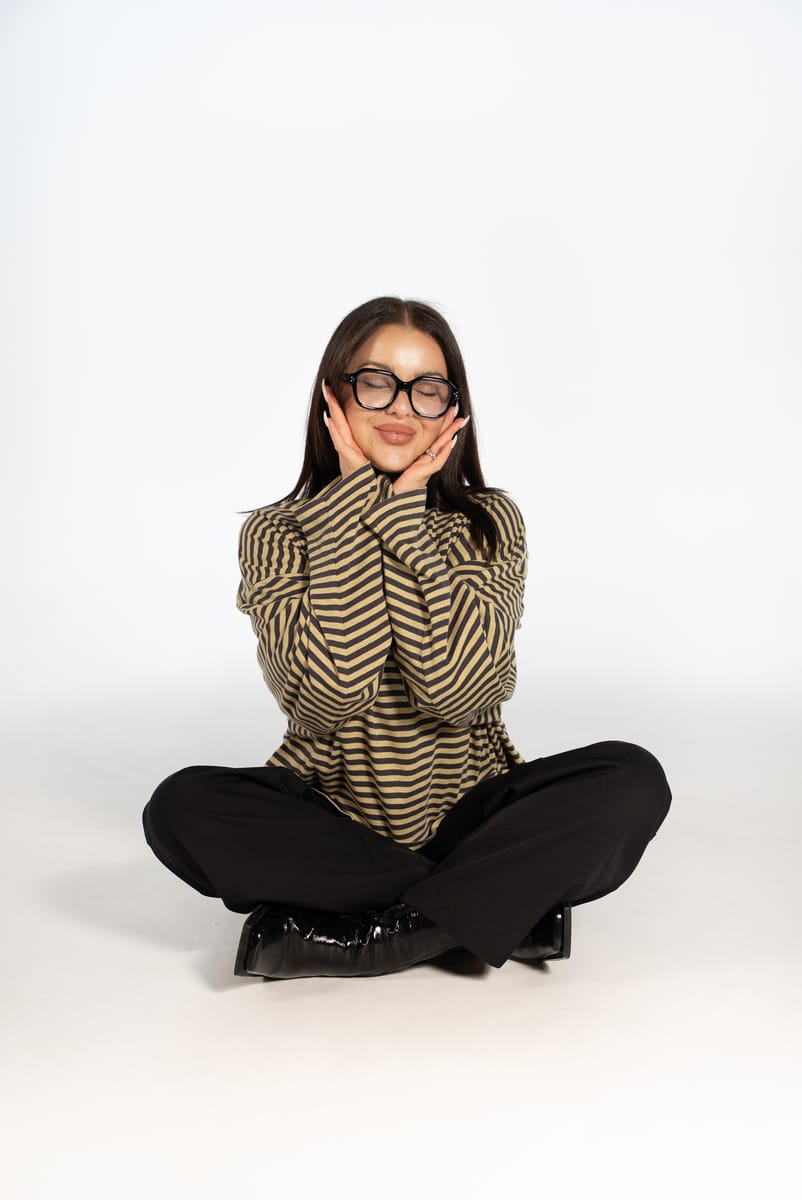
Diet Coke has mastered the art of reinvention. The drink has evolved from an iconic way to stay thin in the 90s to the corporate girly's indugence today. Its success lies in its ability to adapt to the cultural moment so it never goes out of style.
One thing about us marketing girlies? We love a D.C.
When that 2pm, post-lunch crash starts hitting, Diet Coke is your bestie.
Sweet, sparkling and skinny.
In the 80s and 90s, these three words were THE lifestyle.
And Diet Coke successfully tacked its brand onto the era where thinness was a virtue, and indulgence was swapped out for restriction.
Problematic? Absolutely.
But effective? Unstoppably so.
When the drink launched in the year 1982, it was more than just another soda on the shelf. It was an aspiration.
Diet culture was high on the rise, and Coca-Cola was selling the dream of guilt-free indulgence. No calories, no sugar, no problem.
The beverage's marketing spoke directly to a growing audience of calorie-conscious consumers who were ready for a soda that let them have their cake and drink it, too.
The timing was everything. Soon, Diet Coke became shorthand for discipline and sophistication. Everything from the silver can to the word DIET plastered on the side was oh so chic.
This was not about slurping down sugar like any other regular soda. It was about making a choice, and more importantly, putting that choice on display.
Fuelling the heroin chic era.
By the 90s, Diet Coke was everywhere: from office desks to fashion week and even the club.
And then came Kate Moss.
Her appointment as the drink’s creative director was a stroke of marketing brilliance. Who better to cement Diet Coke’s reputation as a cultural staple than the poster child of 'nothing tastes as good as skinny feels?'
I’m sure we’re all familiar with the look of the time. Pale skin, dark under eyes, smudged eyeliner, messy hair, and looking like you hadn’t eaten since last Tuesday were all part of the overall aesthetic.
Diet Coke slotted right into that narrative, not as a guilty pleasure, but as a practical solution to skipping soda, desserts, or hell, why not even lunch, while staying edgy.
This alignment with the ‘heroin chic’ aesthetic wasn’t without its issues.
The malnourished look might’ve been edgy then, but it cemented unattainable beauty ideals that still haunt us today. And Diet Coke was selling a body type most of us couldn’t achieve without skipping meals, or even entire food groups.
The association with such unattainable beauty ideals may have helped it soar. But it also tethered the brand to a cultural moment steeped in problematic messaging about bodies and self-worth.
Fuelling the corporate girlie.
Fast-forward to the 2020s, and Diet Coke’s vibe has thankfully shifted from runways to reality.
Forget fashion week. Diet Coke is now the unsung hero of 'that girl' productivity culture. When the afternoon slump hits, there it is: fizzy, caffeinated, and just sweet enough to trick your brain into thinking it’s had a sweet little treat.
Today, Diet Coke’s marketing leans into relatability. It’s no longer about looking cool at fashion week; it’s about getting through your third Teams meeting of the day without losing your mind.
Campaigns like 'Just Because' invite you to enjoy the drink without overthinking it, which—ironically—feels like a very calculated move.
The brand messaging leans into the irrational, guilt-free pleasure of Diet Coke. No calorie counts. No beauty ideals. Just vibes. And yet, it still feels intentional, maybe even a little...smug? Because no one does brand longevity like Coca-Cola.
And we just can’t quit it.
There’s something about Diet Coke that’s more than the sum of its parts.
It’s not just the caffeine kick or the zero-calorie promise—it’s the sense of ritual. That sleek silver can is a daily pick-me-up for some, a nostalgic throwback for others.
Every time it risks fading into irrelevance, Coca-Cola pulls out a new trick. Whether it’s rolling out a celebrity collaboration, redesigning the packaging, or crafting a new slogan, Diet Coke always finds a way to stay in the conversation.
This is more than manufacturing mere brand loyalty. Diet Coke has mastered the art of reinvention, making sure it’s never out of sight or out of mind, even if off to the side for a bit.
Diet Coke’s staying power comes from its ability to adapt to every cultural moment, from 90s thinness to millennial burnout chic.
Clearly, Diet Coke isn’t going anywhere.
I KNOW it’s practically poison, okay? But I’m just a girl.
And a girl needs her little treats to get through, you know, the horrors.
The drink has also become a cultural touchstone.
It’s not just what’s in the can (shoutout to aspartame and caffeine); it’s what the can represents. Freedom, indulgence, thinness, survival—Diet Coke has been everything to everyone, and that’s why it’s still here.
Even if we wanted to quit Diet Coke, we probably couldn’t. The brand’s genius lies in its ability to tap into our collective psyche, reflecting whatever we need it to be in that moment. It’s problematic, iconic, and endlessly fascinating.
The takeaway?
If you want your brand to have Diet Coke-level longevity, take notes. Know your audience, evolve with the times, and don’t be afraid to tie your product to larger cultural trends—just tread carefully if those trends involve body image and beauty standards.
And as for us marketing girlies, we’ll always take notes when a brand refuses to quit – just like our beloved D.C.
-Sophie, Writer
Not going viral yet?
We get it. Creating content that does numbers is harder than it looks.
But doing those big numbers is the fastest way to grow your brand.
So if you’re tired of throwing sh*t at the wall and seeing what sticks, you’re in luck.
Because making our clients go viral is kinda what we do every single day.
